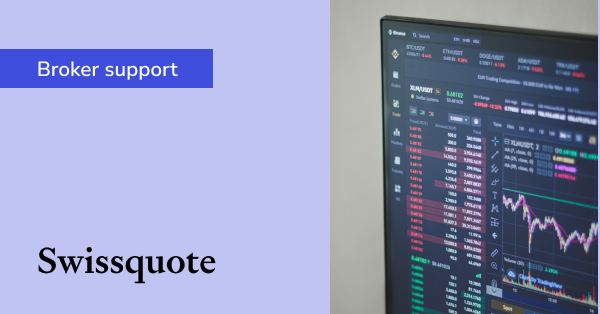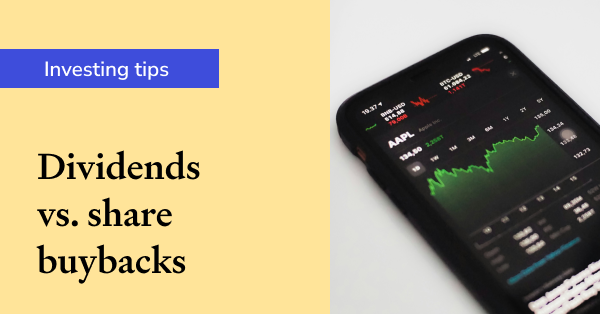Active vs. passive investing
Disclaimer: This article is for informational purposes only and does not constitute a specific product recommendation, or taxation or financial advice and should not be relied upon as such. While we use reasonable endeavours to keep the information up-to-date, we make no representation that any information is accurate or up-to-date. If you choose to make use of the content in this article, you do so at your own risk. To the extent permitted by law, we do not assume any responsibility or liability arising from or connected with your use or reliance on the content on our site. Please check with your adviser or accountant to obtain the correct advice for your situation.
When it comes to investing, active vs. passive investing has become a hot topic. The two nearly opposite strategies are compelling in their own ways; active investing appeals to the desire to make lots of money quickly, and passive investing promises slow and reliable earnings over a longer period. But what other differences are there between the two, and does one offer a higher guarantee of success than the other?

What is active investing?
Active funds are run by fund managers, who independently assess each investment to attempt to "beat the market". When active investing, you will generally have a remit, however, the fund manager will have a specific strategy they follow in order to take advantage of the market’s peaks and troughs. Managing a portfolio of active investments requires a lot of time, with fund managers often tracking the changes in stock prices multiple times a day and investing (or divesting) accordingly. This big investment of time on your portfolio manager’s behalf means more fees for you, and there is no guarantee that their strategy will pay off; however, if it does beat average index returns, you’ll find yourself ahead of the market.
What is the goal of active investing?
When looking at active vs. passive investing, their goals are the same; to make money. However, the two different mechanisms by which they achieve this seem entirely opposite. While the goal of passive investing is a slow and steady profit, active investing seeks to make short-term profits quickly. This happens as your fund manager closely tracks the activity of your investments and takes full advantage of short-term price fluctuations.
What are the benefits of active investing?
Beyond making lots of money quickly, there are quite a few benefits of active investing.
-
Greater rewards. Active funds have the potential to outperform all of their peers or their benchmarks. And greater risk-adjusted returns are possible with a quality active investment strategy.
-
More short-term opportunities. Portfolio managers can take advantage of momentum in the market, or use swing trading strategies, making headway on their portfolio in very short periods of time, especially compared with passive investing where you don’t buy and sell stocks and try to "ride out" dips in the market.
-
Far greater flexibility. A portfolio that is managed with a strategy of active investment can see stocks turned around quickly; purchased when they’re undervalued and divested as their value drops. This offers a greater level of risk management, as money managers can adjust their client’s portfolios to align with prevailing market conditions.
-
Working with an expert. With an experienced portfolio manager overseeing your investment, their knowledge will allow them to hedge their bets, utilising different techniques to offload stocks once they pose a risk to your portfolio.
What are the disadvantages of active investing?
While there are many benefits to active investing, it can come with its downsides, including a greater risk of losing money than with passive investing.
-
Key man risk. When active investing, you have chosen a particular fund manager and are trusting in their instincts, research and decision-making. This brings with it the risk that your fund manager leaves, changes their strategy, or simply has a poor strategy, which can lead to you losing money on your investment.
-
Potential for underperformance. If your fund manager makes poor choices, your portfolio may perform worse than the market. This isn’t uncommon.
-
Higher fees. Active investing comes with higher fees as you are paying for a fund manager to invest your money. With a high turnover of stocks, too, can come higher commissions and taxes that can eat into your portfolio’s returns.
-
Barriers to entry. Active funds can often set minimum investment amounts which can limit who is able to invest.
What is passive investing?
Passive investing follows a chosen index and is usually run by an algorithm. Passive funds, or tracker funds, are also relatively cheap when compared to active funds. Passive investing involves choosing the index you want to follow (for example, you may choose to follow the S&P 500, oil or gold, or a particular sector) and sticking with this investment through its ups and downs, with a view to long-term profit.
When passively investing, you limit the amount of buying and selling within your portfolio. If you’re investing in a major index, like the S&P 500, when the constituents of the index change, your investment simply mirrors this change; adding into your portfolio of stocks whichever new companies have entered into the S&P.
What is the goal of passive investing?
Like active investing, the goal of passive investing is to make money, however this is achieved over a far longer period, and ideally with a higher rate of success than active investing. Passive investing aims to avoid the larger fees of acting investing, with the goal of building wealth gradually.
What are the benefits of passive investing?
There are a range of benefits to passive investing if you have the time and patience to engage in this strategy.
-
Underperformance isn’t a consideration. When passive investing, your portfolio will never underperform, instead it will shadow the index you’ve invested in.
-
Fewer fees. Fees for passive investing are fewer than those associated with an active fund. And without the added commissions and taxes which come with constant trades, passive investing is a more cost-effective way to invest.
-
Simplicity. Passive funds are far more simplistic than active funds, they require far fewer changes to keep track of, and don’t require a fund manager to oversee your portfolio.
-
Long-term returns. Passive investments are more stable as they don’t aim to beat the market. While this can sometimes pay off in dividends, it can also result in a loss. A passive portfolio allows for a slow and steady improvement in value over time.
What are the disadvantages of passive investing?
When passive investing, your investment will never outperform the index it follows as its purpose is to follow that index precisely. With the inclusion of fees, your fund will also remain slightly below the curve.
-
Passive investment requires patience. This can involve ignoring significant downturns in the market and holding onto your investments, knowing that there will be a payoff in the long-run.
-
Returns are smaller. With less risk comes less reward, and as passive funds track the market without buying and selling as things rise and fall, their returns will be smaller and gained over a more extended period of time than active funds.
-
There are more limitations than active funds. When passive investing, you are limited to specific indices or sets of investments that you are locked into, regardless of what’s happening in the market.
Summary
While looking at active vs. passive investing can almost seem like a head versus heart decision, this doesn’t need to be the case. Passive investing may appear to have greater success in the long run, however, this requires playing a long game and none of the windfalls associated with active investing. The two are not mutually exclusive and can both play a role in a robust suite of investments; hedging against market downswings with passive investments while also exploring new market trends with active investments.
Track the performance of all your investments Sharesight
Thousands of investors worldwide are already using Sharesight to automatically track the performance of their investment portfolio. What are you waiting for? Sign up and:
-
Track all your investments in one place, including global stocks, ETFs, mutual/managed funds, property, and even cryptocurrency
-
Automatically track your dividend and distribution income from stocks, ETFs and mutual/managed funds
-
Run powerful reports built for investors, including Performance, Portfolio Diversity, Contribution Analysis, Multi-Period, Multi-Currency Valuation and Future Income (upcoming dividends)
-
Get the true picture of your investment performance, including the impact of brokerage fees, dividends, and capital gains with Sharesight’s annualised performance calculation methodology
Sign up for a FREE Sharesight account to start tracking your performance (and tax) today!
FURTHER READING

How Sharesight helps advisors track net worth and simplify compliance
We talk to Ryan Jones, Partner, Accountant and Financial Advisor at Jones Louros, about how he uses Sharesight to manage his clients’ investment trusts.

Automatically track Swissquote trades with Sharesight
If you trade using Swiss broker Swissquote, you can automatically import your trading data to your Sharesight portfolio.

Dividends vs. share buybacks: Which is better for investors?
We take a look at dividends and share buybacks, discussing the pros and cons of each, the tax implications and which one is more beneficial for investors.